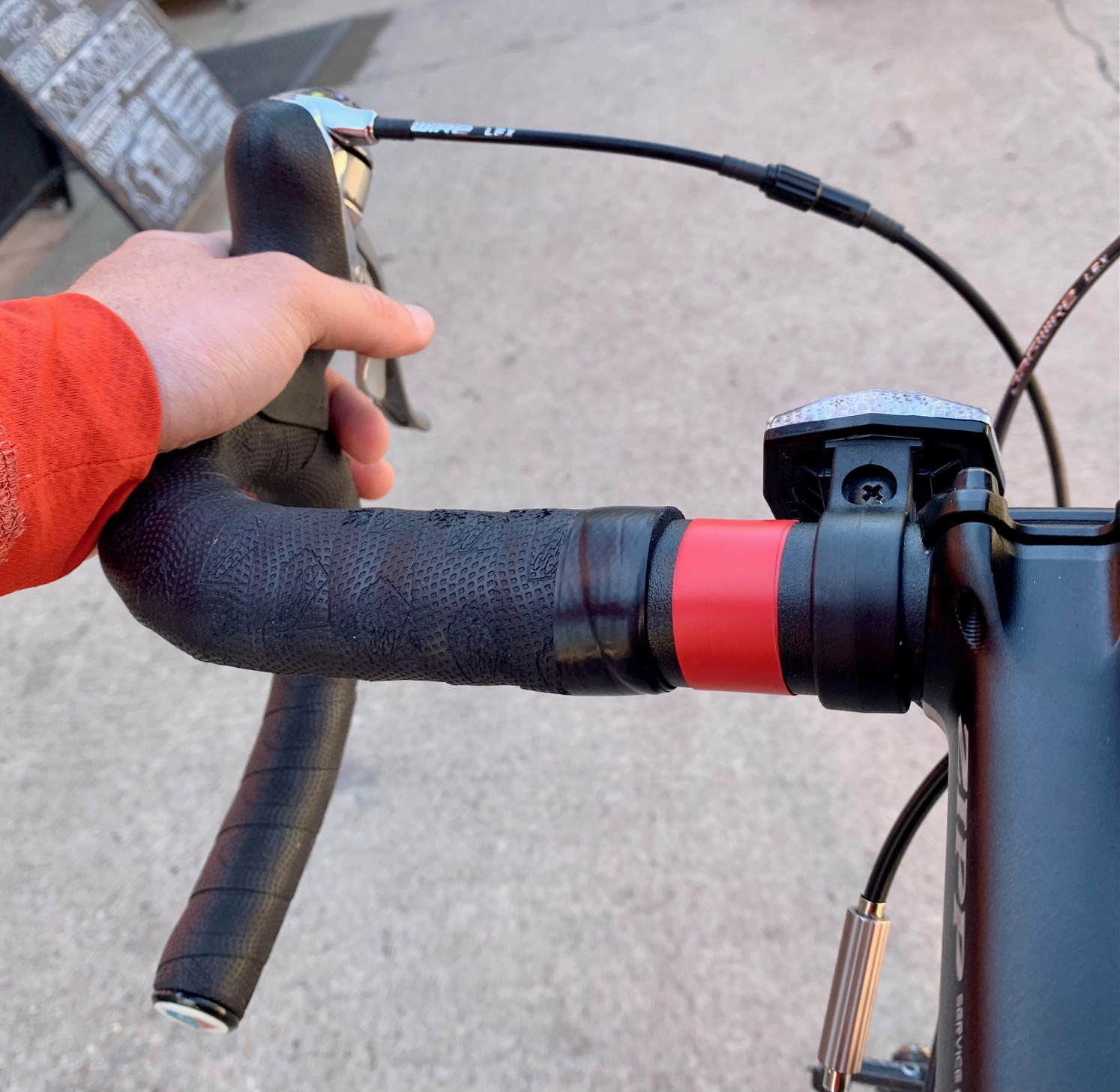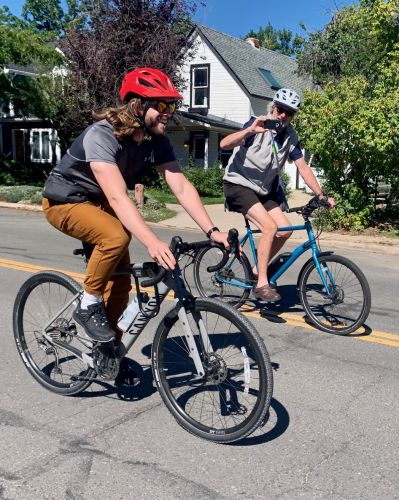To recap Part One: I’ve done thousands of bike fits over 40-plus years. But to call myself a “bike fitter” in today’s high-tech environment of motion-capture videos and sophisticated software would be a misnomer.
So I’ve retreated into my niche, doing free 30-minute fits for Community Cycles members here in Boulder, Colorado, for the past decade. Even “fits” is a bit of a stretch, because I don’t take measurements or use fitting tools.
Instead, my focus for regular folks, the recreational riders and commuters I see every week, is on how they sit more than how they fit. Of course, I’ll eyeball and adjust if their seat’s too high or low, their stem’s too long or (rarely) too short.
My process involves interviewing them, going for a short ride, taking photos or videos as they pedal, talking and tweaking, then another ride. The talking falls into these same eight “broken records” over and over.
1. Ever wonder why we call it a saddle, not a seat?
The first step to help people sit better is to explain the role of the saddle. “Like a horse saddle, it keeps your pelvis in place while you pedal. So you don’t have to exert your arm and shoulder muscles to hold yourself in position.”
This is important for people who have their saddles tipped forward, maybe half the fits I do. I explain how the center of the saddle “sags” under their weight to create the curvature. Before I raise the nose, we go out for a short spin.
2. OK, now maintain your back angle and steer with your fingertips
Telling them their saddle needs adjusting isn’t nearly as convincing as the feeling of sliding off the front as soon as they remove the rigid brace of their locked elbows.
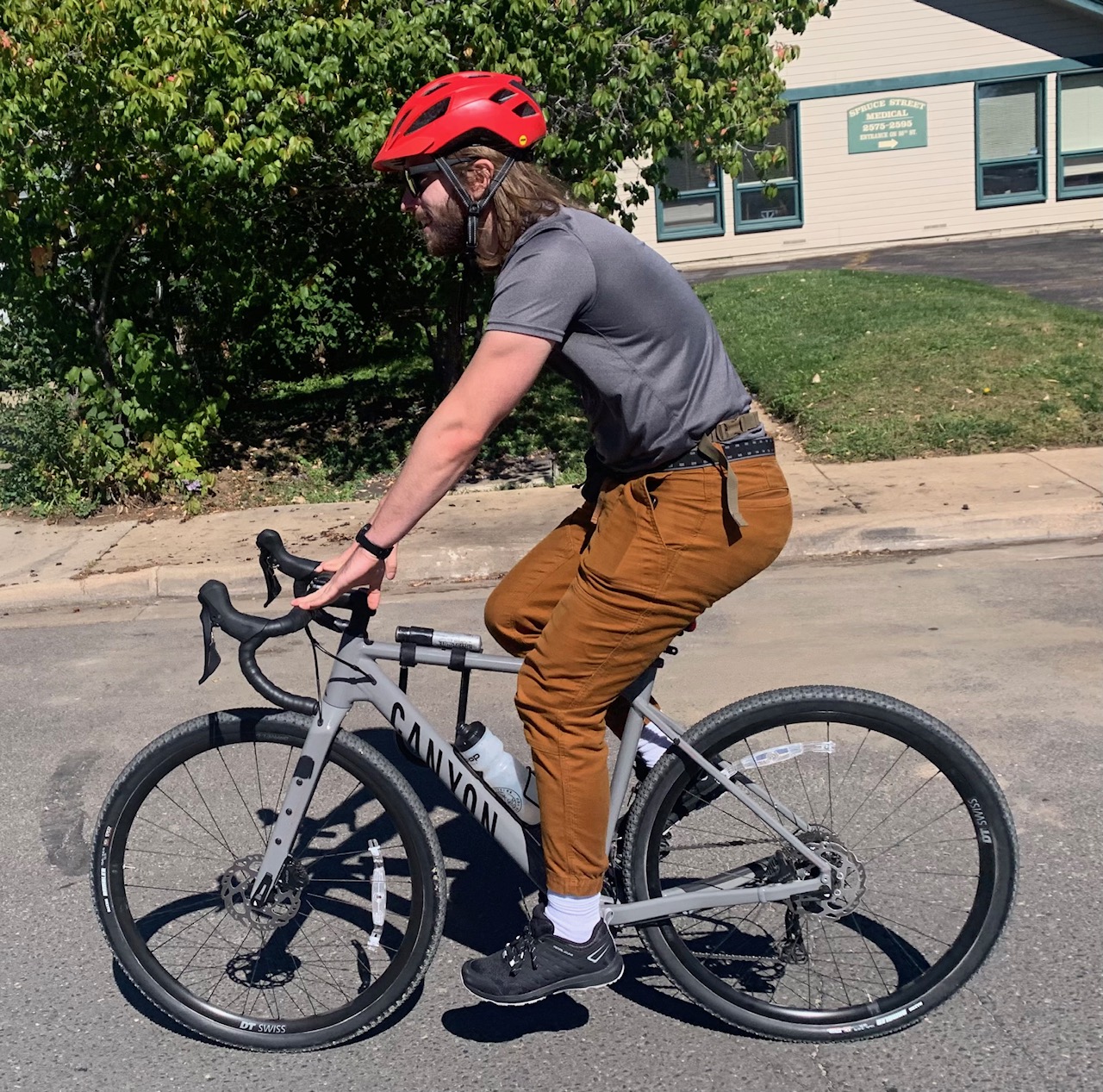 “This is why your trapezius and tricep muscles are sore after a long ride. You’re doing push-ups from the handlebars every few seconds to stay centered on the saddle.”
“This is why your trapezius and tricep muscles are sore after a long ride. You’re doing push-ups from the handlebars every few seconds to stay centered on the saddle.”
Many of the “tipped forward” folks are doing this to reduce pressure from the nose of the saddle. Many more have the saddle nose down because, “This is the way it came” on their Craigslist bike!
So next we address improving saddle comfort. I tell them about local shops who have an ischial spacing measurement device. And I encourage them to go to their favorite shop and find someone of their gender to help them survey the options.
And for people who need more help:
3. Have you heard about the Specialized Experience Center?
Boulder being Bike Mecca, we have one of the three SECs in the U.S. Its ischial device is digital, with a pressure-sensitive pad and a video screen to see what’s going on “down there.”
At the risk of offending other brands, I believe that Specialized has the industry’s best saddle options, especially for women. The flip-side, high-end saddles at SEC cost more than many paid for their bikes.
4. Rotate your pelvis forward a bit, now feel how your core engages to support your torso?
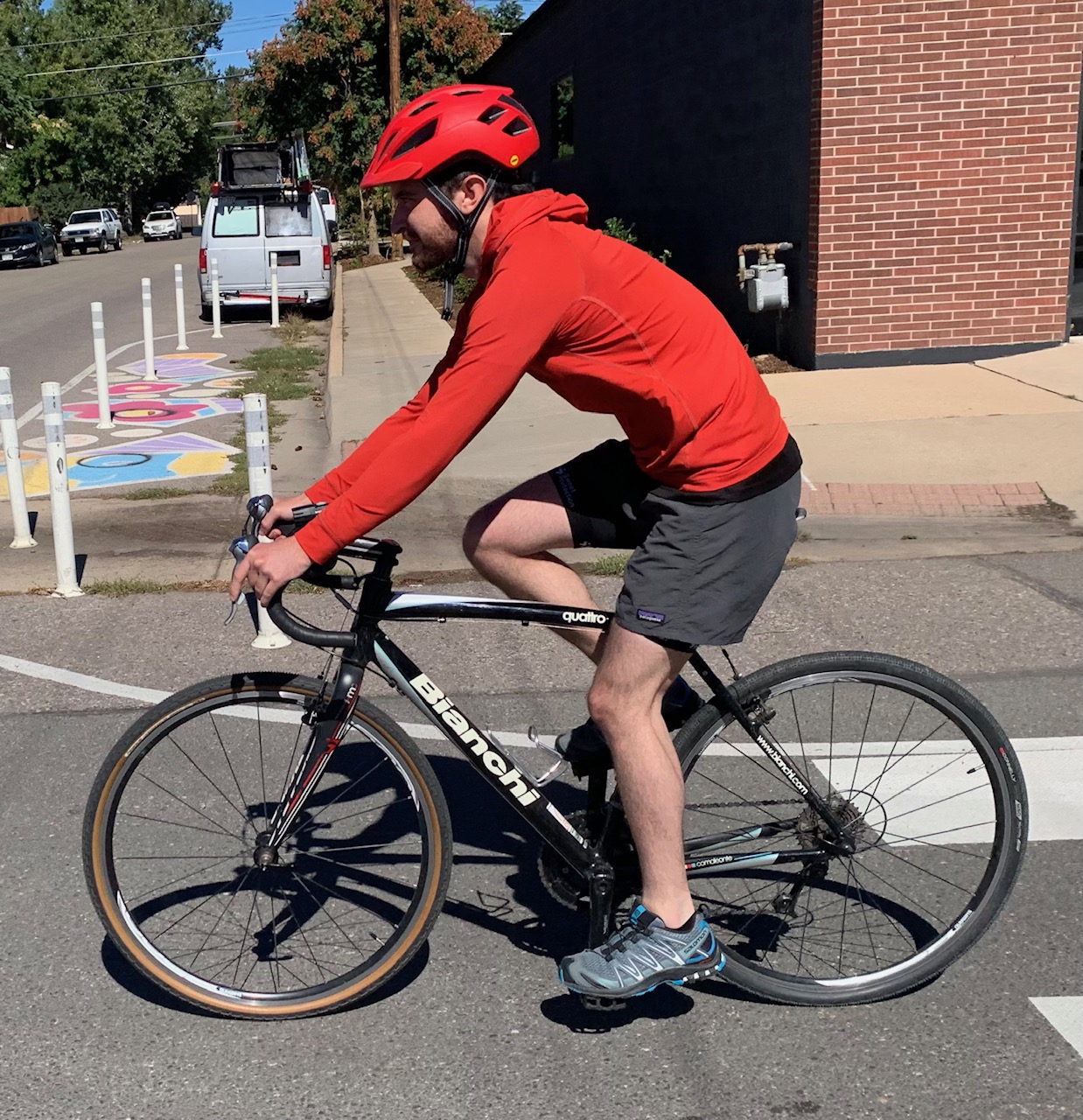
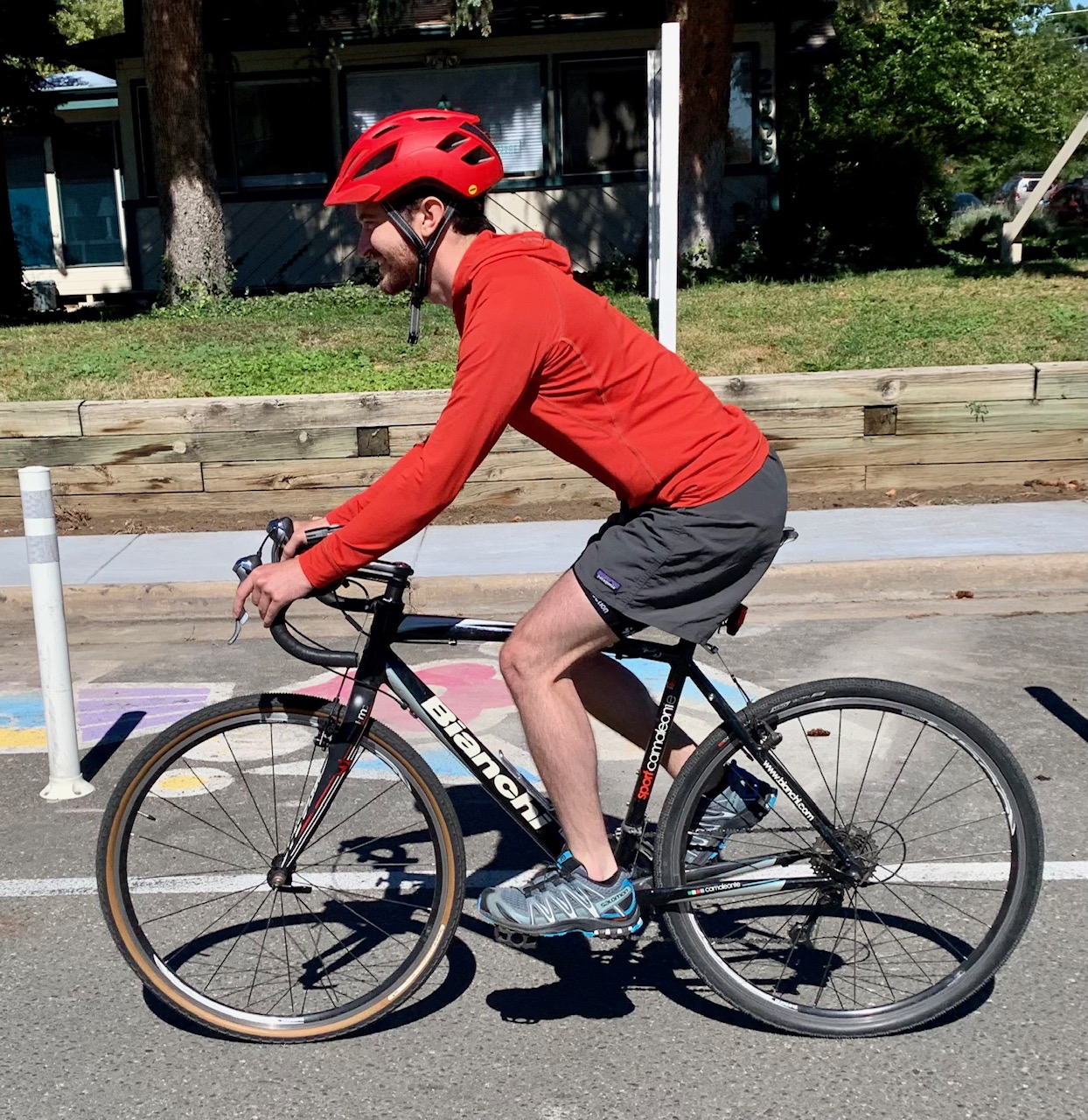 Whatever the saddle angle, most of the people I work with sit with their pelvises too upright and their elbows locked. Their backs are curved, their traps and necks get sore. No one’s told them how and why to try another way.
Whatever the saddle angle, most of the people I work with sit with their pelvises too upright and their elbows locked. Their backs are curved, their traps and necks get sore. No one’s told them how and why to try another way.
“Straighten your back, relax your elbows” is good advice. To help people sit differently, you need to help them understand how to better support the weight they’re putting on their hands.
“Cantilever yourself out toward the bars using your core muscles, then reach out and hold onto the bars rather than leaning on them.” I bend at a 45-degree angle, then they do the same to feel which muscles are activated.
Above are two photos of Jason last Saturday. The first one, left, from before we discussed how to sit better; the second one, right, on a short ride after we talked about it. Straight back. Lower shoulders. Looser elbows. He’s smiling! I love it when a plan comes together!
5. Let’s move that saddle forward, OK?
When a rider is too stretched out, the first thing I look at are the saddle rails. Good, it’s all the way back in the seatpost clamp. So I push it forward, maintaining the angle if it’s correct. A couple centimeters may eliminate the need for a shorter stem.
Heresy, you say? I subscribe to Keith Bontrager’s thesis from the early 1980s, which posits (summarizing a 33-page document): “While knee over pedal spindle (KOPS) is a good starting point, it’s not proven by biomechanical analysis to be a hard-and fast rule.”
It’s an easy decision to place a short-distance, slower paced rider’s comfort over KOPS. I’m not saying fitters should discard their plumb bobs, they have a place. Just not at Community Cycles!
6. Walk over to the jersey rack, turn around and walk back
About 20% of my clients are riding clipless. To make sure their cleat set-up matches their body, I’ll ask them to take off their shoes and walk back and forth while I watch their feet.
Most folks line up their cleats with the marks on the bottom of the shoe. Since bodies are often asymmetrical, it’s common to see each foot pointed differently. Or toed out when their cleats are set up for straight-ahead pedaling.
Next, a little digging out the gunk from their cleat fixing bolts, a little tweaking in the direction their body wants to go, and a caution to keep experimenting if it doesn’t feel right on their next longer ride.
7. Look with your eyes, not your whole head
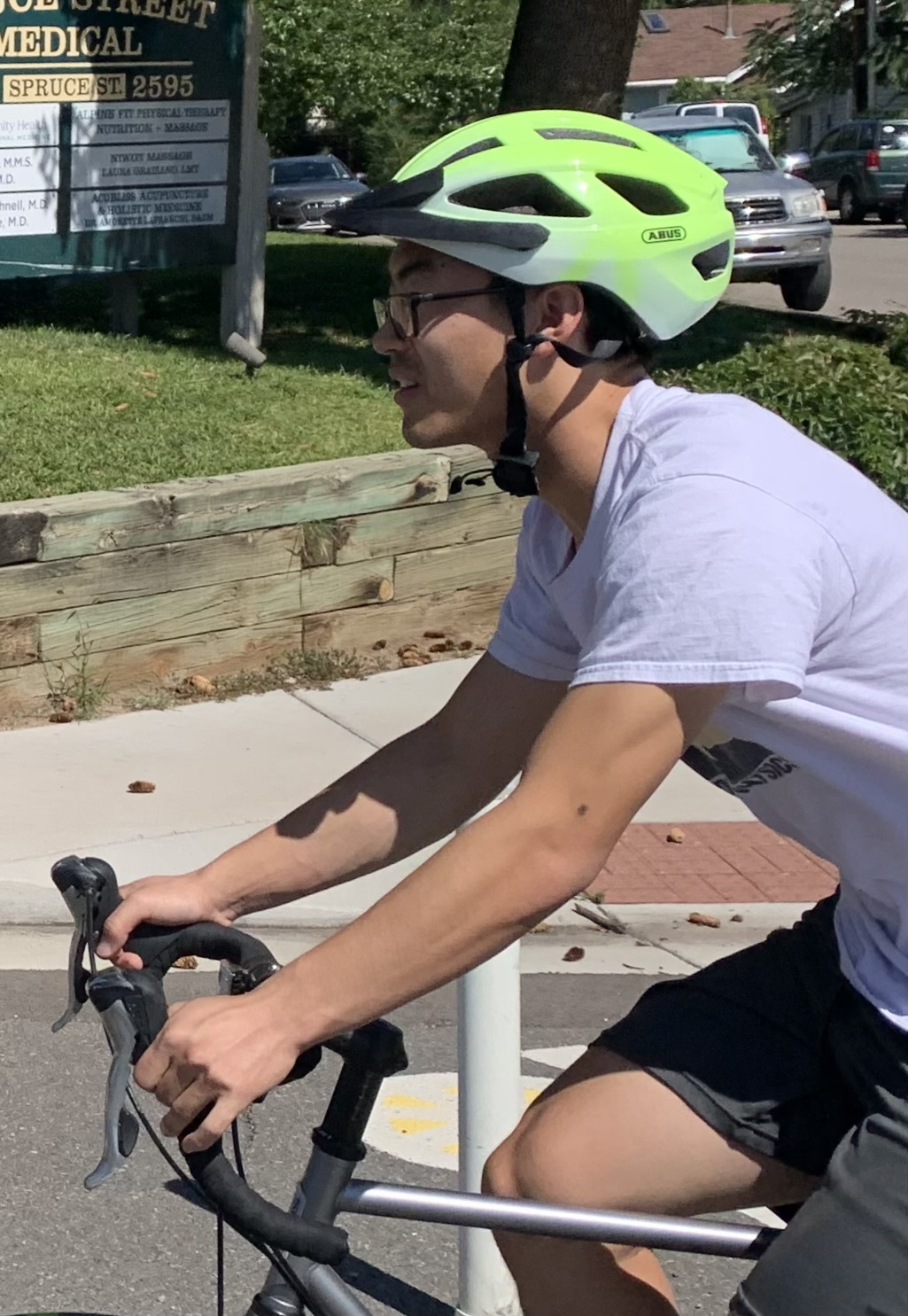 “My neck hurts on longer rides.” Not surprising, you’re riding bi-pedally. We stand-up mammals are used to having our field of vision horizontal. Neck pain is especially common for eyeglass wearers who have to crane their necks to see below the frames.
“My neck hurts on longer rides.” Not surprising, you’re riding bi-pedally. We stand-up mammals are used to having our field of vision horizontal. Neck pain is especially common for eyeglass wearers who have to crane their necks to see below the frames.
I encourage them to straighten their necks, rotate their heads forward and “look through your eyebrows.” Which they will do on a test ride with me, then they’ll revert back to their lifelong habit of “vertical face.” How to remind them?
8. What color reminder tape would you prefer?
Below are Jason’s bars after our second ride. He chose red from my selection of colored tapes. Whenever he sees the tape, he’ll think, “Oh yeah, rotate forward, use my core, hold onto the bars, don’t lean on them.”
David the “look with your eyes” guy chose green tape as a reminder to go with his helmet. Why not give everyone a color that pleases them or matches their bike?
I hope my experience in helping regular folks get more comfortable and more efficient can be of help to you and your customers. Let me know your own experiences and tips in the comments below!
